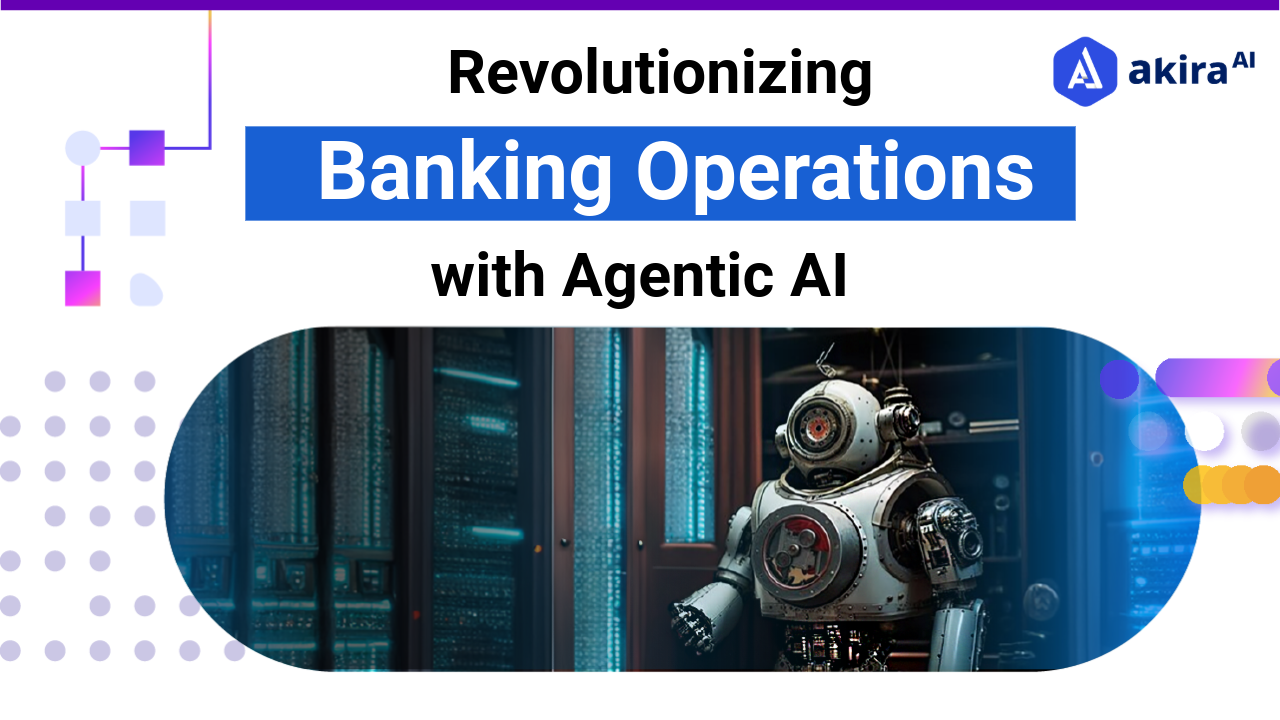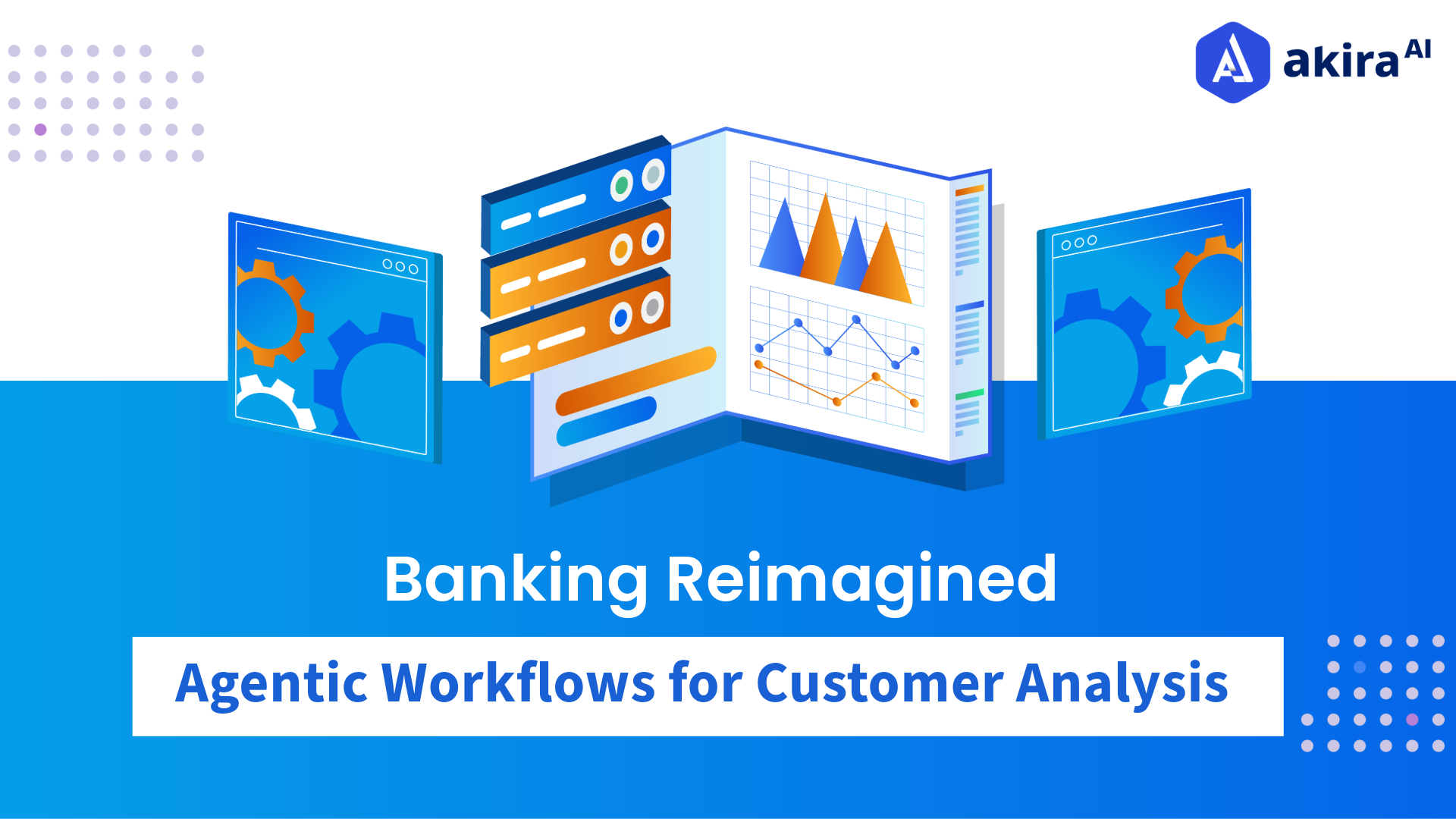In the constantly changing banking sphere, more than ever, today, real-time transaction monitoring is very critical. Nowadays, with growing regulatory audits and very elaborate fraud schemes, financial institutions have to opt for highly advanced technology to be on top of things. AI agents and agentic workflows are a transformative solution allowing them to operate independently, enhance efficiency, and increase precision.
The blog explains how Agentic AI solutions are revolutionizing the real-time transaction monitoring of banks through the optimization of compliance, risk management, and fraud detection.
Real-Time Transaction Monitoring in Banking
Real-time transaction monitoring in banking refers to continuously tracking and analyzing financial transactions as they occur. This system flags suspicious activities, such as unusual account behavior or potentially fraudulent transactions, enabling banks to respond instantly to threats. Traditional monitoring systems often rely on rule-based frameworks, which are slow to adapt to new fraud patterns. However, Agentic AI-driven real-time transaction monitoring offers a dynamic, adaptive approach, automating the detection process and ensuring that banks stay compliant with regulations while safeguarding customer accounts.
AI Agents in Real-Time Transaction Monitoring in Banking
AI Agents are software, and they work independently, with predetermined tasks, in the absence of human interference, using artificial intelligence. They never stop learning over large amounts of data and changing environments. Such agents can process huge amounts of information, identify patterns, and make real-time decisions without any human influence. AI agents have been designed to perform such sophisticated work as data analysis, prediction, and decision-making; hence, they play a very crucial role in dynamic information-intensive scenarios such as finance, healthcare, and customer service.
Real-time transaction monitoring AI agents monitor real-time streams of transaction data for suspicious activities. They work well by using machine learning models to configure what seems odd and alert suspicion of fraud or money laundering. In an agentic AI system, multiple agents could work; their operation can be distributed over different functional aspects such as fraud detection, compliance, or risk assessment. This way, it ensures a fast, accurate, and broad monitoring system that will improve banking security and regulatory compliance.
Comparison of Traditional Practices vs. Agentic AI Solution
|
Aspect |
Traditional Practices |
Agentic AI in Real-Time Transaction Monitoring |
|
Approach |
Rule-based, static systems with predefined parameters. |
Adaptive, dynamic systems using AI agents that learn from data. |
|
Fraud Detection |
Fixed rules for flagging suspicious transactions. |
AI agents detect evolving fraud patterns using machine learning. |
|
Adaptability |
Limited; requires manual rule updates to adjust to new threats. |
Highly adaptable; AI agents continuously learn from real-time data. |
|
Autonomy |
Requires frequent human intervention for updates and decisions. |
Operates autonomously with minimal human input. |
|
Workflow |
Linear process with limited flexibility. |
Collaborative agentic workflow, with each agent specializing in tasks. |
|
Compliance Monitoring |
Often managed separately, requiring manual effort. |
AI agents continuously ensure real-time compliance with regulations. |
|
Efficiency |
Slower and resource-heavy due to manual updates and processes. |
Highly efficient, with automated monitoring and real-time responses. |
How AI Agents Improve Autonomous Real-Time Transaction Monitoring
AI agents enhance real-time transaction monitoring in several ways:
-
Dynamic Fraud Detection: Its AI agents use machine learning models to understand fraud transactions and identify the latest evolved fraudulent patterns. It captures anomalies in real-time with much greater accuracy compared to rule-based systems, thereby enabling banks to raise suspicious activities before they actually become full-fledged risks.
-
Autonomous Operation: AI agents operate autonomously, requiring minimal human intervention. Once trained, these agents can handle the entire monitoring process, reducing the workload on human compliance teams and improving operational efficiency.
-
Collaborative Agentic Workflow: As the agent monitors the transaction process, each assumes a special role. Through collaboration, their interaction is effective enough so that information can be transferred promptly in order to achieve speed and accuracy.
-
Regulatory compliance: AI agents can be coded to monitor the regulatory requirements in real-time, meaning any transaction flagged will be compliant with banking regulations. This overt approach reduces the amount of risk of getting levied with fines and judicial implications for non-compliance.
Use Cases of Real-Time Transaction Monitoring

Figure: Use Cases of Real-Time Transaction Monitoring
-
Suspicious activity detection:
The AI agents easily pick out erratic behavior in the form of frequent and large ATM withdrawals or transactions from high-risk geographies. The system flags such behavior for more meaningful investigation in real-time and prevents fraud from going unattended.
-
Card Fraud Detection:
AI agents monitor credit and debit card transactions in perpetuity and call out anything that could be suspicious when compared to normal spending behavior. They can point out several fast purchases or transactions across locations in a short period of time: the first warning signs of card fraud to the banks.
-
Minimize false positives:
Traditional systems tend to perform poorly, citing false positives in such cases, which hinders efficiency. AI agents thereby cut down such numbers by implementing advanced analytics and machine learning, distinguishing between actual and suspicious activities, thus cutting down on unnecessary alarms and streamlining operational efficiency.
-
Cross-border payment monitoring:
In cross-border payments, AI agents can analyze the most complicated international transaction data of banks very fast to keep it aligned with local and international regulatory standards. They track the way currency conversion moves through various routes and destinations to catch any suspicious transactions.
-
Enhance Customer Experience:
It can enhance the customer experience even through real-time fraud prevention without actually blocking actual transactions. There is even a possibility that the actual transaction with a flag may prompt immediate cross-checking of the user's behavior pattern and validation at the system level so nothing human-related should interfere with seamless customer interaction.
-
Direct Regulatory Reporting:
This means that AI agents automatically produce regulatory reports, ensuring that banks produce the mandatory reporting requirements. With regard to any high-risk transactions confirmed by the AI agents, the producing of SARs occurs and is dispatched to the respective authorities in an instant.
-
Better Chargeback Protection:
It is absolutely true since AI agents can be treated to real-time data. They find those transactions most likely to be charged off, particularly in e-commerce transactions. If detected in the early stages, potentially fraudulent or disputed transactions will prevent a chargeback volume, costly both to the merchants and banks.
Benefits of Real-Time Transaction Monitoring
-
Accurate Detection-Improved: It can detect a suspicious transaction with much more accuracy than human teams or traditional systems with fewer false positives, which significantly enhance efforts at fraud prevention.
-
Cost Efficiency: AI agents minimize the necessity of hiring many human resources for intense transactions' monitoring. The banks can allocate their workforce to strategic needs like investigating flagged transactions or developing customer-centric services.
-
Scalability and Adaptability: Agentic AI relies less on constraints compared to traditional rule-based systems. Once the volume of transactions increases or if fraud patterns change, AI agents will adapt themselves readily, thus making effectiveness over time.
-
Strong compliance with regulation: AI Teammates would update its regulatory requirements automatically and adjust the monitoring rules so that it would reduce its chances of receiving fines for regulatory non-compliance, and banks would be adequately compliant with the global standards.
-
Improving Experience: AI agents reduce transaction delays to ensure easy, secure operations with an improved overall experience for customers. Customers eventually receive faster processing times for their transactions and higher security levels.
The Future of Agentic AI in Real-Time Transaction Monitoring
-
Agentic AI-Powered Real-Time Monitoring: The application of Agentic AI in digital transformation would ensure supremacy in the real-time monitoring of transactions in banks. There would be heavy emphasis through constant analysis by AI for quick detection of fraudulent activities without over-reliance on manual oversight. Transactions could be increased in secure and efficient monitoring.
-
Blockchain Integration for Security: Such a fusion of blockchain with AI-based transaction monitoring would create immutable records while enhancing security features. Being so, blockchain's nature is transparent and tamper-proof in such a manner that once recorded, it cannot be altered, therefore negating the possibility of fraud being overlooked or undetected.
-
Automated compliance and risk management: Banks will automatically computerize complex compliance and risk management processes with the agentic nature of AI systems. The AI agents track all transactions within a bank for complying with the regulations, and this information flags high-risk activities to make relevant returns, saving banks huge costs and resources.
-
Innovation and Consumer Engagements: Freed resources from such automation will end up in investing in innovation and customer engagement. Such banks will find enough time and capacity to focus on product innovation, customer experience development and keeping pace with an ever-changing market.
-
Flexibility and Sensitivity:They will evolve continuously because of emerging new threats and conditions that are formed due to new data producing continuous learning. This will keep the group of banks ahead in terms of fraud tactics and regulatory changes. This way, they will provide continued protection and compliance within the moving financial environment
Conclusion: Real-Time Transaction Monitoring
AI agents and Agentic Workflows are revolutionizing real-time transaction monitoring in banking. By automating the detection of suspicious activities and ensuring regulatory compliance, these advanced systems offer a more effective, scalable, and efficient approach to transaction monitoring. With platforms like Akira AI leading the charge, the future of fraud prevention and compliance in banking looks both promising and secure.
Next Steps in Transaction Monitoring
Talk to our experts about transforming real-time transaction monitoring with AI agents. Discover how industries and departments utilize Agentic Workflows and Decision Intelligence to detect anomalies and prevent fraud proactively. AI-driven automation enhances transaction analysis, compliance, and security, optimizing financial operations for greater accuracy, efficiency, and risk mitigation.

.png)
